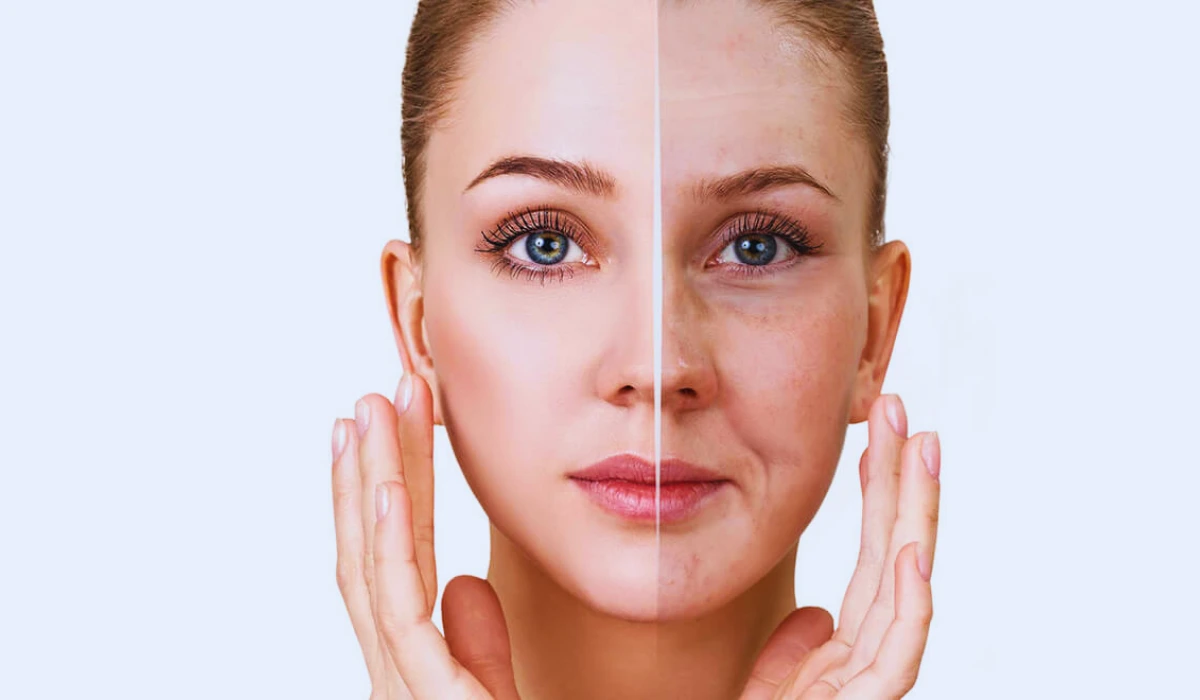Sallow skin refers to skin that has a yellow, unhealthy hue. If you have noticed your complexion looking dull, yellowish, or just generally unhealthy lately, you may be dealing with sallow skin. Sallow skin can detract from your appearance, making you look tired or sick. Additionally, it can indicate some underlying health conditions that need to be addressed.
There are several potential causes of sallow skin including anemia, aging, vitamin deficiency, overall poor health, smoking, and certain medical conditions. Identifying and treating the root cause is key to improving the appearance and health of sallow skin.
In many cases, sallow skin results from correctable lifestyle factors like lack of sleep, sun damage from excessive UV exposure, poor diet, stress, smoking, or alcohol intake.
Optimizing these areas and focusing on overall health aims to get to the root of the problem. But in some cases where underlying medical conditions are the cause, specific treatments may be required in addition to lifestyle changes.
Sallow Skin Causes
Some of the most common medical conditions that cause sallow, unhealthy-looking skin include:

1. Anemia
Anemia, which is a lack of healthy red blood cells in the body, is one of the most common medical causes of sallow skin. Red blood cells help transport oxygen throughout the body. A deficiency causes oxygen transport problems, resulting in skin taking on a pallid, sickly hue.
There are a few different types of anemia such as iron deficiency anemia vitamin deficiency anemia, and anemia caused by chronic disease. Iron deficiency is usually the most common culprit. This can result from inadequate iron in the diet or from health conditions that impair your body’s ability to properly absorb iron like celiac disease.
Treating the underlying type of anemia, whether via iron supplementation, vitamin treatment, or other approaches, can help restore healthy skin color and complexion over time. Always work with your doctor for an official diagnosis if you suspect anemia.
2. Vitamin B12 Deficiency
A deficiency in vitamin B12 can also lead to pale, sallow skin color along with other symptoms like weakness and fatigue. This essential vitamin plays many vital roles related to red blood cell formation and DNA production.
Inadequate vitamin B12 can be caused by digestive disorders, autoimmune diseases, vegetarian or vegan diets, and other causes that impair absorption of the vitamin through food. Addressing any underlying absorption issues via treatment or adjusting your diet to include more vitamin B12-rich animal products usually resolves this issue.
3. Liver Conditions
The liver plays over 500 vital roles in your health and performance. Unhealthy liver function from conditions like hepatitis, cirrhosis, autoimmune disorders and more can result in dull, sallow-looking skin. The liver processes nutrients, filters waste, produces vital proteins, removes toxins, and regulates blood health among its many jobs.
When the liver is damaged and cannot keep up with demand, skin health suffers. The yellowish appearance results from excess buildup of waste byproducts like bilirubin. Successfully treating liver diseases can help restore proper nutrient processing and waste elimination which aims to improve sallow skin back to a healthier hue.
4. Thyroid Problems
The butterfly-shaped thyroid gland in your neck manufactures hormones that regulate many body systems including skin cell turnover and renewal. Both hypothyroidism (underactive) and hyperthyroidism (overactive) thyroids can contribute to sallow, unhealthy-looking skin.
Symptoms like exhaustion, cold sensitivity, hair loss, weight fluctuations, and many others accompany changes in skin tone with thyroid disorders.
Endocrinologists can test your full thyroid panel and determine ideal treatment plans involving medication, diet changes, or supplements to restore hormone balance and resolve skin issues.
5. Smoking
Smoking deteriorates health on many levels – and skin is no exception. The toxic chemicals and abundant free radicals in cigarette smoke damage skin cell DNA, collagen production, and small blood vessels. This slows cell turnover leading to a characteristic dull, sallow appearance in smokers as skin loses its luster and healthy glow over time.
Additionally, pursing your lips to smoke cigarettes over the years causes narrowed lips and wrinkled skin around mouth areas. The cumulative effects age skin prematurely. Kicking the habit allows your body to heal slowly over time which aims to help restore healthier skin function and appearance.
6. Aging
As we age, skin cell regeneration and collagen production slow while free radical damage accumulates. The result is skin that appears thinner, looser, more frail, and yes…sallow. Age spots, wrinkles, and uneven pigmentation also make skin look unhealthy. While you cannot stop aging, you can slow down the rate at which it visibly impacts your skin.
Protecting against sun damage, staying hydrated, eating skin-healthy foods, managing stress, and treating other age accelerators helps minimize the natural thinning and sallowing process over time. Certain anti-aging creams with retinoids and antioxidants also aim to delay visible aging effects. Though genetics do play a role in how well you age.
Conclusion
In summary, sallow skin is an unhealthy, yellowish skin discoloration resulting from various internal and external causes. Contributing factors range from medical conditions like anemia and liver disorders to lifestyle behaviors involving poor diet, too much sun exposure, smoking, high-stress levels, and more.
Remember that genetics also play a role in skin quality and aging so accept realistic outcomes. Some minor residual discoloration simply comes from growing older as well. But a diligent, proactive approach gives your skin the best chance possible at restoring to a healthier, brighter, more lively tone once again.
While reversing very advanced signs of skin aging proves difficult, catching sallow skin early and treating it comprehensively makes a notable difference in the majority of cases. So don’t just cover up dull lackluster skin.
Commit to discovering the root cause and caring for both body and skin more holistically for visible improvements. What will your first step be on the journey toward renewed skin vitality?

